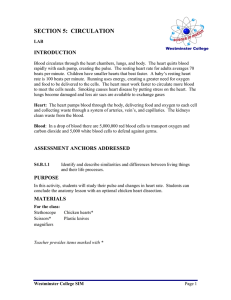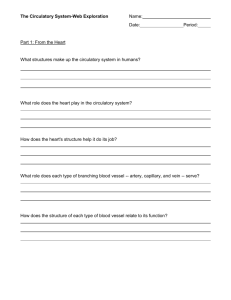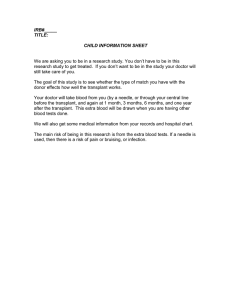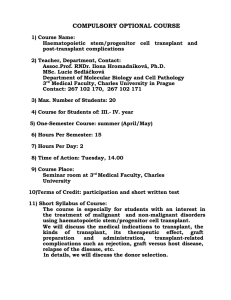Operation: Heart Transplant (pbs.org) http://www.pbs.org/wgbh/nova
advertisement
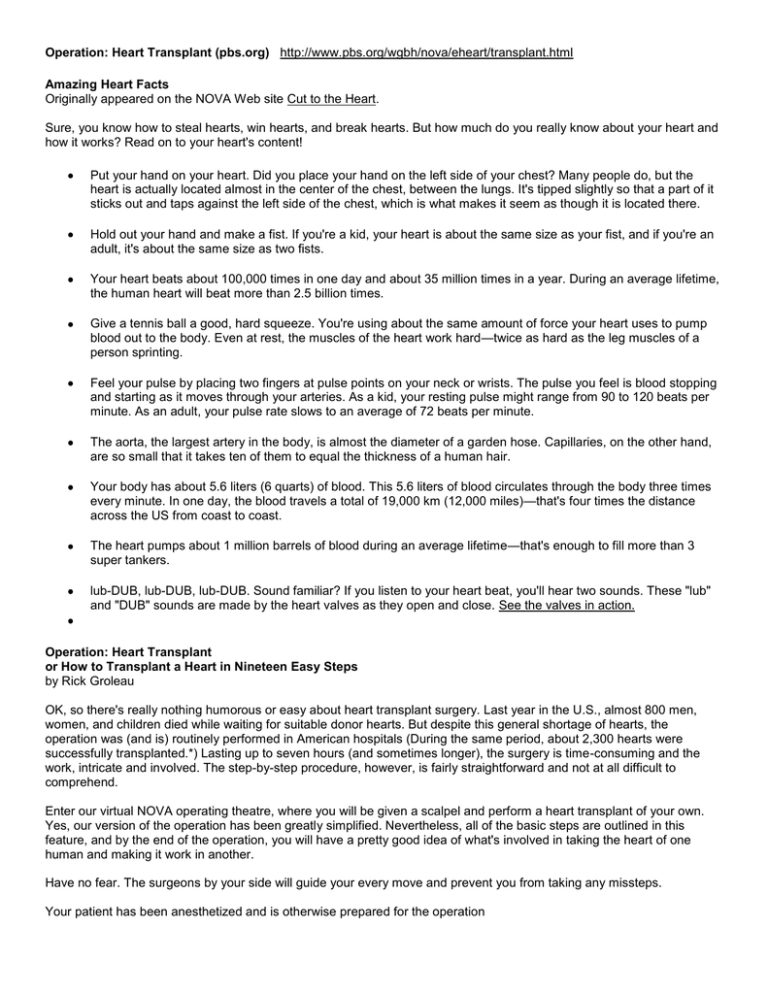
Operation: Heart Transplant (pbs.org) http://www.pbs.org/wgbh/nova/eheart/transplant.html Amazing Heart Facts Originally appeared on the NOVA Web site Cut to the Heart. Sure, you know how to steal hearts, win hearts, and break hearts. But how much do you really know about your heart and how it works? Read on to your heart's content! Put your hand on your heart. Did you place your hand on the left side of your chest? Many people do, but the heart is actually located almost in the center of the chest, between the lungs. It's tipped slightly so that a part of it sticks out and taps against the left side of the chest, which is what makes it seem as though it is located there. Hold out your hand and make a fist. If you're a kid, your heart is about the same size as your fist, and if you're an adult, it's about the same size as two fists. Your heart beats about 100,000 times in one day and about 35 million times in a year. During an average lifetime, the human heart will beat more than 2.5 billion times. Give a tennis ball a good, hard squeeze. You're using about the same amount of force your heart uses to pump blood out to the body. Even at rest, the muscles of the heart work hard—twice as hard as the leg muscles of a person sprinting. Feel your pulse by placing two fingers at pulse points on your neck or wrists. The pulse you feel is blood stopping and starting as it moves through your arteries. As a kid, your resting pulse might range from 90 to 120 beats per minute. As an adult, your pulse rate slows to an average of 72 beats per minute. The aorta, the largest artery in the body, is almost the diameter of a garden hose. Capillaries, on the other hand, are so small that it takes ten of them to equal the thickness of a human hair. Your body has about 5.6 liters (6 quarts) of blood. This 5.6 liters of blood circulates through the body three times every minute. In one day, the blood travels a total of 19,000 km (12,000 miles)—that's four times the distance across the US from coast to coast. The heart pumps about 1 million barrels of blood during an average lifetime—that's enough to fill more than 3 super tankers. lub-DUB, lub-DUB, lub-DUB. Sound familiar? If you listen to your heart beat, you'll hear two sounds. These "lub" and "DUB" sounds are made by the heart valves as they open and close. See the valves in action. Operation: Heart Transplant or How to Transplant a Heart in Nineteen Easy Steps by Rick Groleau OK, so there's really nothing humorous or easy about heart transplant surgery. Last year in the U.S., almost 800 men, women, and children died while waiting for suitable donor hearts. But despite this general shortage of hearts, the operation was (and is) routinely performed in American hospitals (During the same period, about 2,300 hearts were successfully transplanted.*) Lasting up to seven hours (and sometimes longer), the surgery is time-consuming and the work, intricate and involved. The step-by-step procedure, however, is fairly straightforward and not at all difficult to comprehend. Enter our virtual NOVA operating theatre, where you will be given a scalpel and perform a heart transplant of your own. Yes, our version of the operation has been greatly simplified. Nevertheless, all of the basic steps are outlined in this feature, and by the end of the operation, you will have a pretty good idea of what's involved in taking the heart of one human and making it work in another. Have no fear. The surgeons by your side will guide your every move and prevent you from taking any missteps. Your patient has been anesthetized and is otherwise prepared for the operation
